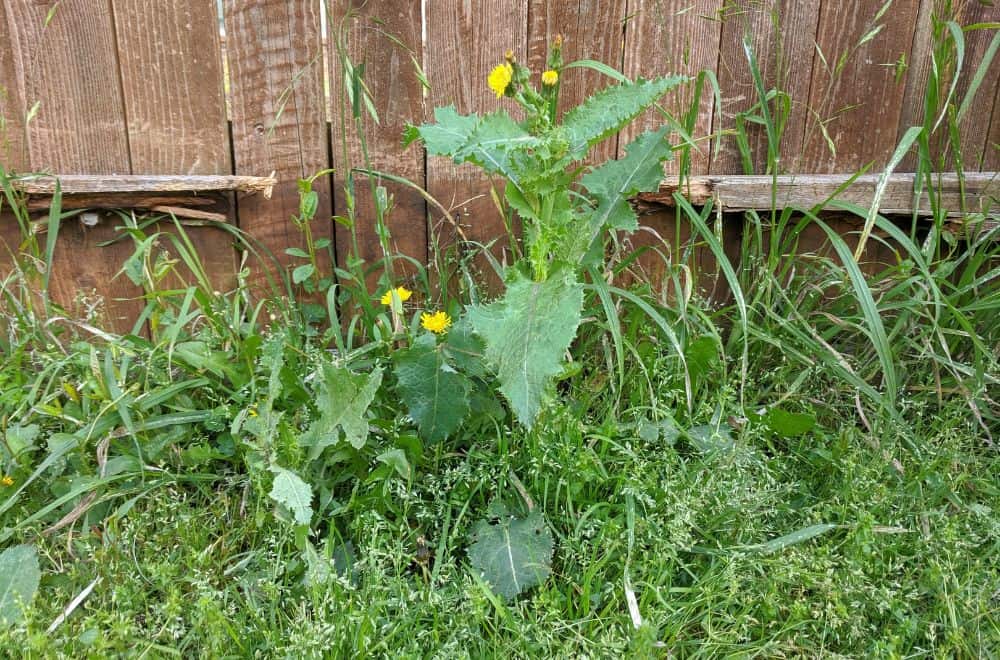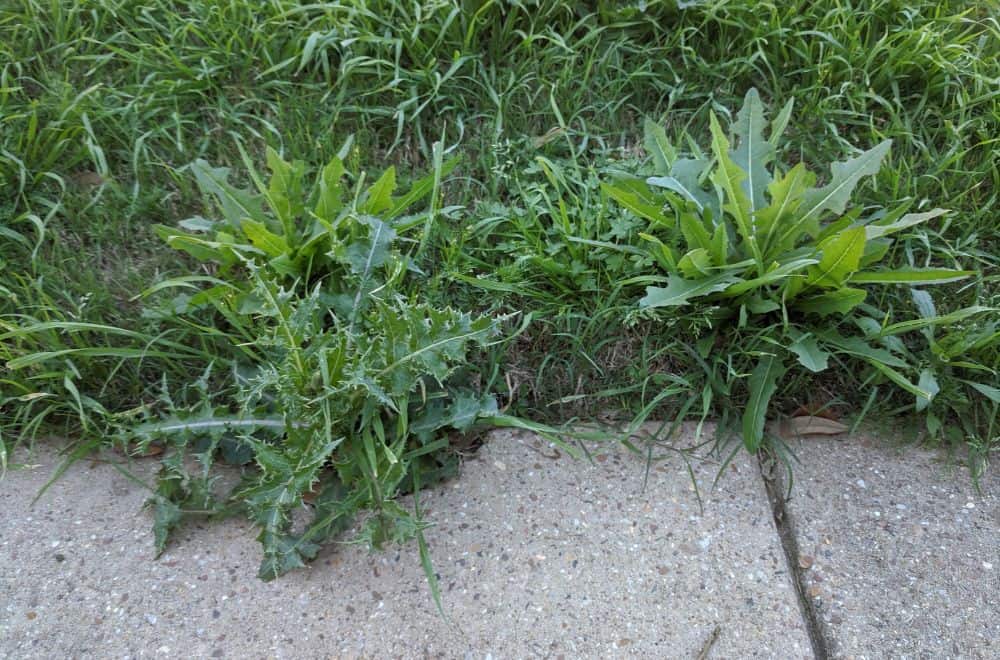Have you ever face the ruined lawn full of ugly weeds, without any possibility to enjoy beautiful, green grass? It is a horrible thing indeed.
I know that using chemicals is the most comfortable way to solve this issue, but it is definitely not the choice you should make. Instead, try to create a lovely new lush lawn full of healthy and vigorous grass. Let’s see how.
Define the Status of Your Lawn at the Moment

From the very beginning, you need to identify the current situation with your grass and the condition of your lawn.
Grass density – The problem in your yard will begin from the moment when you spot first patches of dirt located between the grasses. We can talk about insufficiently watered parts without enough nutrients which will be real weed-magnets in your yard. If you miss solving the problem on time, you can expect this place fills with unwanted weeds.
Thatch – A matted layer of grassroots and various dead stuff means that you have some thatch on the surface of the soil. As long as this layer is about a 0.25 to 0.5 inches (0.6 – 1.3 cm) thick, you don’t have any reason to worry about.
The layer of thatch will help with providing organic matter for grass, slowing the evaporation from the soil, protecting grassroots from high heat during summer, and even slowing germination of weeds seed.
However, if this layer is more than 0.5 inches (1.3 cm) thick, it will probably cause problems including choking out your grass. Also, your lawn won’t get enough water during light rain since thatch will absorb all moisture.
Grassroots depth – When your grass is weak with shallow roots, it can’t reach the necessary nutrients from the soil. Keep in mind that health grass needs at least 6 inches (15 cm) long roots. Otherwise, you can expect weeds spread around.
Weed spread – You can be sure that you will lose a fight against weeds if it has spread to over 50% of your lawn. Determine the type of weeds and the surface of the affected yard and decide if you need to kill all of them immediately or to deal with a piece by piece of it over time.
The Types of Weeds

The most common weeds you can find on your lawn are divided into three basic categories:
- Annual weeds – This type produces its seeds during only one season.
- Biennial weeds – This type produces its seeds during two consecutive seasons.
- Perennial weeds – This type produces its seeds during a long time. Its well-established roots allow this grass to overwinter and start growing again in spring without any damage.
The Way to Restore a Lawn Full of Weeds
Once your yard is full of weeds, your grass can’t grow healthy and green. Be prepared that you can’t solve the problem quickly, but it is not impossible if you are persistent and have a strong will to restore your lawn.
Step 1. Cleaning and mowing

Start with cleaning your yard. Get rid of as many unsightly clusters of weeds as possible by using a small hand-shovel. Tearing the weeds off at the surface of the ground is not enough. You need to move the entire plant including roots.
Also, don’t leave pulled weeds to lie on the ground. When you mow your lawn the next time, you will chop weeds up and inadvertently replant them.
While mowing your yard, no matter if you use a reel mower, self-propelled lawn mower, or electric cordless lawn mower, pay attention to blades and set them at a high setting. While your grass is vigorous, tall, and thick, you won’t have any problems with weeds.
Step 2. Weed killer

Use a sprayer and apply the weed killer directly to the weeds. Try to avoid healthy grass since even best herbicides can damage it. Do it at least three weeks before the term for setting up a new lawn.
Step 3. Aeration

To aerate your land correctly, you can use both hand or power tools. Just push a tube into the ground and leave an open hole while moving out the tiny plug of the soil. After forming the loose soil, roots of your grass can grow deeper into the ground, and both fertilizer and water will penetrate quickly and reach deeper layers.
Use the turf aerator and aerate your yard from one end to the other. Start in a horizontal direction and keep going diagonally from one corner to the opposite one.
That is the best way to help air reach even the deepest grassroots. This process is the only solution for a high-traffic lawn, especially if it contains mostly clay.
Step 4. Plant new grass seed

The essential part is planting new, weed-free seeds and establishing a new lawn. Before starting, use a power rake to lift thatch, break up aerator plugs, and loose the soil. Go over your yard from two directions, remove dead debris, and allow seeds to come to direct contact with the ground.
Then spread the precise amount of seeds around by using a broadcast spreader. In general, you will need approximately fifteen seeds per square inch (0.00065 m2).
Step 5. Water the soil

Water the new grass regularly. If it is possible, you should do it at least twice a week. Choose to do that job early in the morning to avoid the heat of the summer days.
Most yards need approximately 1.5 inches (3.8 cm) of water a week. How much water your lawn needs depends on the type of grass and the soil in your yard as well as the climate in the region you live in.
To precisely determine how often you need to water your lawn, you can use a few tests, including screwdriver test (pushing a screwdriver 6 inches (15 cm) into the soil to check if it is moist) or rolled grass (grayish, rolling leaf blades are the sign that your land is dry).
You can use an oscillating lawn sprinkler which can cover a waste area and prevent washing away grass seeds at the same time.
Step 6. Fertilizing the lawn

Let your lawn dry and spread weed-killing fertilizer over the new grass. To help the roots of your grass to develop appropriately, you should add a lawn fertilizer containing nitrogen, potassium, and phosphorus.
Keep in mind that some States don’t allow adding phosphorus due to water pollution concerns. Therefore, you need fertilizers labeled ‘New Lawns’ or ‘Starter.’
Take care to apply it in mid-spring and summer if you have warm-season grasses in your lawn, and during summer or early fall if grow cool-season grasses. That way, your grass will get all the necessary nutrients for healthy growth.
Conclusion
Give your new grass enough time to grow. After it becomes viable, you can start maintaining it.
Maybe you should invest in a seasonal treatment to help your lawn stay weed-free, green, and lush. Apply it once every three months, and you won’t need to spend time by fighting with weeds and re-seeding the new grass every spring.

Leave a comment